It’s that time again! We’ve got another Legends of Runeterra (LoR) guide for you, this time on the Aggro, Midrange, and Control terms. This guide is aimed at beginners mainly, but check out our series of guides for some more advanced tips if you’re looking for help in your climb to Masters.
So, what do we mean by Aggro, Midrange, and Control? We’ll dive into each a little deeper and give you some pointers on how to play them below, but let’s start with simple definitions.
Aggro decks, as the name would suggest, are early-game aggressive decks. They try to win the game as quickly as possible, usually by dealing direct damage to the opponent’s Nexus and/or by swarming the board with cheap units and overpowering the opponent with wide attacks.
Midrange decks are often medium-paced decks; they fight for board control and tend to play mana-efficient units each turn. Midrange decks usually win in a similar way to Aggro decks — by summoning lots of units, or creating a “wide board” — but they do so at a balanced speed instead of rushing to win in the early rounds.
Finally, Control decks are usually the slowest of the three archetypes. They play lots of spells and effects that counter or interrupt an opponent’s gameplan, usually stalling until their win conditions are activated on turn 10 or later.
These are pretty common Collectible Card Game(CCG) terms and by no means the only recognizable deck archetypes, but we’ll cover some other terms at the end of this guide.
Now that we have that established, let’s look at some examples of each archetype and what their win conditions are.
Aggro Decks and How to Play Them

Let’s start with an Aggro deck that’s been popular in LoR for months now: Spider Aggro.
Aggro decks in LoR tend to play a mixture of burn and cheap swarm cards, and Spider Aggro is no exception, though it leans more towards the swarm gameplan.
House Spider is probably the best swarm card in the game, while Crowd Favourite is a big threat if it can be played on turn 4 or turn 5 with a wide board to increase its potency.
This is the most common win condition for the deck, in fact. You want to play cheap units in the first 3-4 turns that are hard to block — such as Arachnoid Horror — or have added burn effects like Legion Saboteur, and then drop Crowd Favourite to help seal the deal.
Brother’s Bond and Vision should be used to buff units that your opponent doesn’t choose to — or is unable to — block for surprise damage, while Decisive Maneuver combos brilliantly with Crowd Favourite to make the final push for damage.
Something to keep in mind with this Aggro deck, in particular, is that you shouldn’t waste your units by blocking on the turns when you’re defending.
Not only does this maintain a wide board for Crowd Favourite’s maximum potential, but the damage potential of Saboteur and Horror are important to end the game quickly. You also don’t care about taking early damage to your own Nexus as you’re trying to kill your opponent as quickly as possible.

Let’s take a look at another Aggro deck: Discard Burn. This one focuses much more on direct burn damage through spells, though the early turns will play out pretty similarly.
As before, we want to play cheap units that can deal early damage like Legion Saboteur and Boomcrew Rookie, often avoiding blocking so we can use their effects on multiple turns.
Once we reach turns 3 and 4, however, we want to be playing Draven and Jinx to try and discard our hands, which will level the Jinx and lead to her generating copies of Super Mega Death Rocket!.
Get Excited! is a great card to help thin our hand while also dealing decent damage, and while you may sometimes need to use it to clear big threats, burn spells such as this and Mystic Shot are usually best spent on directly burning down our opponent’s Nexus.
This is probably the biggest mistake beginners make when playing Aggro decks. It’s very hard at first to ignore your opponent’s units and attacks to focus everything on direct damage, and while this isn’t always the best way to play, it will often be the difference between narrowly winning and losing close games.
Midrange Decks and How to Play Them
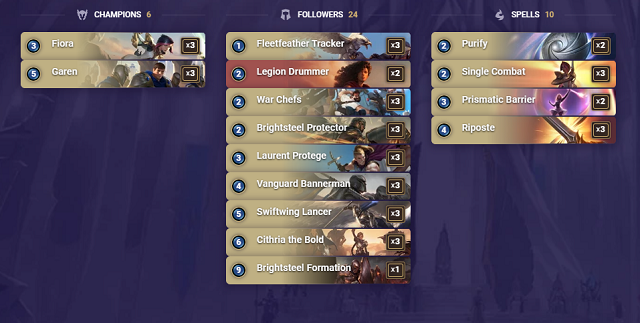
Bannerman decks are the quintessential Midrange decks of Legends of Runeterra, so we’ll examine them first.
We say “decks” here because there are a few very similar versions of the deck running around. The primary focus is to play 37+ Demacian cards to have the best chance of enabling Vanguard Bannerman’s Allegiance ability, and the remaining cards can be selected from a few different regions.
These decks want to summon mana-efficient units each turn (Fleetfeather Tracker on turn 1, War Chefs on 2, Fiora on 3, and so on). They protect their units using Barrier spells to maintain a wide board and get the best use of Bannerman’s ability.
In the later turns, they play Garen and Cithria the Bold together with Bannerman-buffed units to overwhelm your opponent. That’s it; the deck is pretty simple, as is the Midrange archetype in general, but it’s extremely effective when you stick to their gameplan.
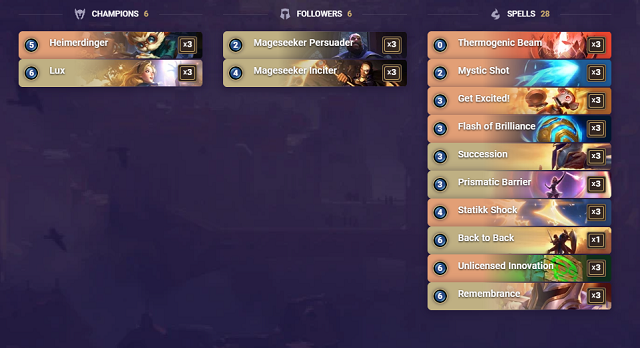
We’ll also briefly examine a Heimerdinger deck, which may not look like a typical Midrange list as the mana-curve is a little abnormal. The main reason for this is Heimerdinger’s unique ability, which enables us to summon lots of units when we play spells.
The best-case scenario for this deck is to have Heimerdinger and multiple copies of Flash of Brilliance in hand on turn 5. This lets us create and summon multiple 3-Power Elusive units, while also generating big spells and replenishing our spell mana.
Prismatic Barrier is another key 3-mana spell that can be used to protect Heimerdinger and create a valuable Elusive unit, while Succession doubles our unit output.
Lux helps us fight for more board control as we reach late-game, too, as we can use Final Spark to help clear units off the board while we continue to swarm our field with free Heimerdinger turrets.
The two Mageseeker cards are also good examples of typical Midrange cards, which provide a large amount of stats for their mana cost, but not much else.
Control Decks and How to Play Them
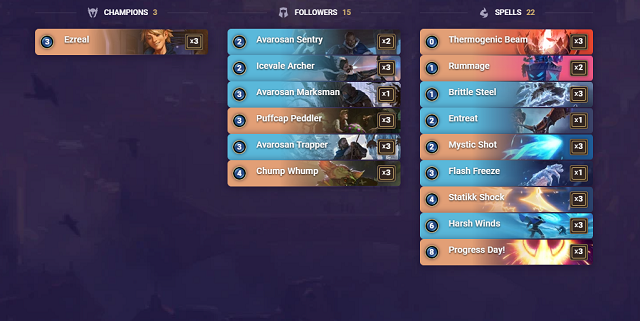
As you may have noticed, Ezreal decks are incredibly powerful Control decks in Legends of Runeterra.
Ezreal’s leveling condition requires you play lots of spells and skills that target your opponent’s units. By doing so, you draw out the game until Ezreal can finish the game with his leveled form.
The general gameplan here is to whittle down your opponent’s units by using cards like Mystic Shot and Statikk Shock, while also making use of the Brittle effect on Icevale Archer, Harsh Winds, and other spells to further hinder their combat options.
Ezreal is often not even played until you’ve targeted eight units, at which point you’re looking to play cheap spells such as Rummage or the Mushroom Clouds created by Chump Whump to machine-gun your opponent’s Nexus down with Ezreal’s ability.
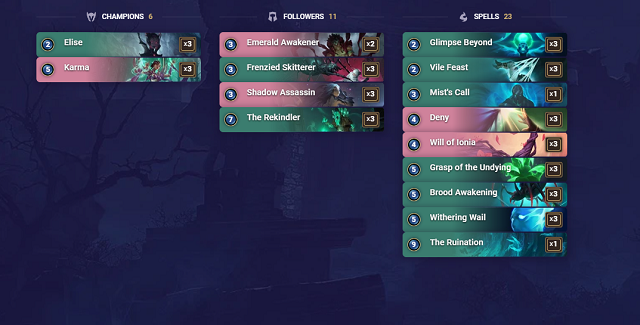
The other Control deck we’ll look at is known as Spooky Karma, which combines Karma with cards from the Shadow Isles region.
Shadow Isles has a lot of excellent tools for controlling the pace of the game and slowing down your opponent. These include damaging spells that also heal your Nexus — Withering Wail and Grasp of the Undying — as well as stall tools such as The Ruination and Frenzied Skitterer.
Your gameplan here is to stall the game until turn 10 when Karma can be played to double up on the effectiveness of your Control spells. You don’t have to worry about playing Karma early, either, as you have great ways of reviving her if your opponent can kill her, using The Rekindler and Mist’s Call.
Control decks often win by out-grinding their opponent’s resources, and Spooky Karma is a great deck at doing just that.
It can be a little slow, though, and Control decks often have a higher skill floor than other archetypes as you need to know what you can and cannot afford to sacrifice in order to survive until turn 10.
Tempo, Combo, and Mill
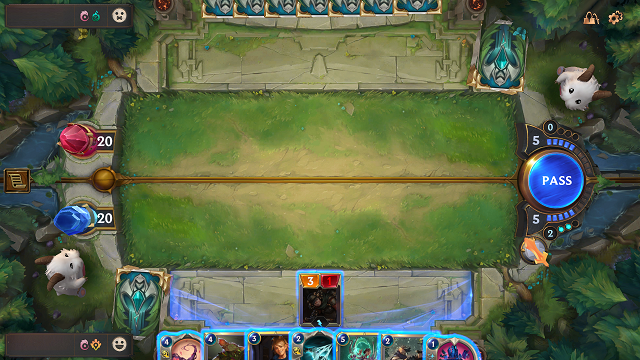
Finally, let’s look at some fringe archetypes that don’t quite fall into the primary three categories.
Tempo Decks
Tempo is often used to describe decks that are somewhere between Midrange and Control. They normally chug along with a reasonable mana-curve until they can swing with a big finisher in a few quick turns. Katarina is a good example of a card that usually works best in Tempo decks.
Combo Decks
Combo decks are usually a form of Control lists. They try to control the pace and drag the game out until they’ve assembled the combo pieces they need to end the game. Karma/Ezreal is a good example of this in LoR.
Mill Decks
Lastly, we have Mill, which isn’t an archetype that currently exists in LoR, but will do soon with the release of Maokai in Patch 1.0. Mill decks try and run your opponent out of cards or cause them to “deck out,” which wins you the game instantly.
—
Hopefully, this guide helped you, but be sure to check out our dedicated page on Legends of Runeterra — we have lots of guides already out, with more on the way soon!

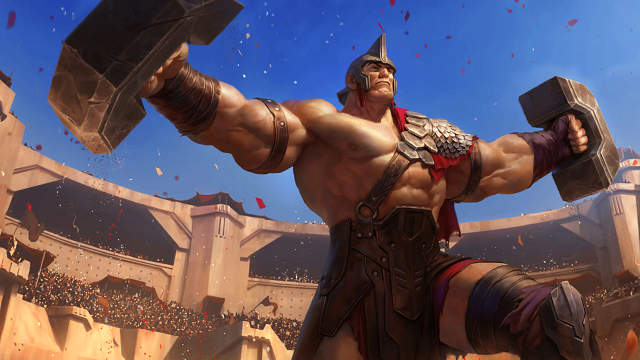





Published: Apr 25, 2020 06:54 am